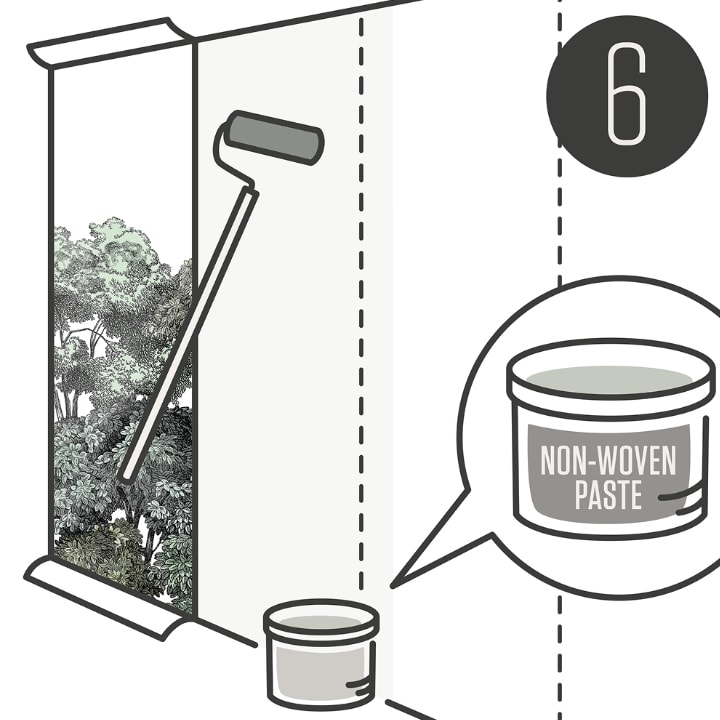How to Hang Wall Murals
The surface of the wall must be smooth, clean, dry and sound. Flaking paint and lose wallpaper should be removed, and any uneven surfaces must be filled. Give the wall a prime coating if its color is very different from the new wallpaper. Very absorbent surfaces, such as plaster walls, should be sized.
Mixing the Paste
- Use a bucket and whisk to mix with.
- Sprinkle content of package into 4 liters of cold water, mixing briskly for 30 seconds.
- After approximately 3 minutes stir again.
- After 15 minutes give it a good final stir and it is ready to use.
- Unused adhesive can be stored for about 14 days.
Right adhesive
Always use an adhesive especially recommended for non-woven wallpaper.
Recommended Tools
- Rollers and tray
- Bucket
- Paintbrush (For the areas that the roller misses, e.g. along the ceiling and skirting boards)
- Spirit level or plumb line (To make sure the wallpaper is straight)
- Steel ruler (To make a straight, clean cut along the top and bottom)
- Wallpaper sponge (Soft cloth or sponge, preferably a cellulose sponge)
- Pencil
- Craft knife
- Wallpapering tool or brush
Step by Step Guide
Follow along with the video or scroll down to our illustrated instructions to learn how to install our wall murals. This guide is for how to hang custom-sized wall murals. If you’re looking for how to hang wallpaper rolls, please check the how to hang wallpaper guide instead.

Step 1
Make sure you have all the lengths and that none of them are defective or damaged. Start by dividing the lengths as indicated by the cutting symbols. Lay the lengths, with the label facing upwards, in numerical order starting with length number 1.



Step 2-4
Our wall murals are always hung from the left to the right, start with the left corner of your wall. The lengths are numbered in hanging order from left to right. The lengths should be hung edge to edge without any overlapping. It is essential that the first length is vertically straight. (Tip: Make a pencil mark one wallpaper width from the left near the ceiling. Hold a plumb line on the mark and draw a vertical line down the wall. Then line up your first length of wallpaper with the pencil line.)



Step 5-7
Roll the paste straight onto the wall. Be sure to evenly cover the entire surface. If you miss a spot, this will cause the wall mural to bubble. Paste an area the width of one and a half lengths at a time. Gently and evenly press the lengths together to ensure there are no visible seams. Make sure the wall has been pasted where the lengths meet so that the edges are not visible.



Step 8-10
Try not to get paste on the front of the wall mural. Any excess paste should be removed immediately using a wet wallpaper sponge. Smooth each length with a clean wallpapering tool or wallpaper brush. Work from the ceiling to the floor and from the middle out to the edges.


Done!
Once all the wallpaper has been hung, cut off any excess along the ceiling and floor. Always use a sharp blade to avoid tearing the paper. Keep the room ventilated and at normal room temperature for 24 hours to allow the paste to dry.